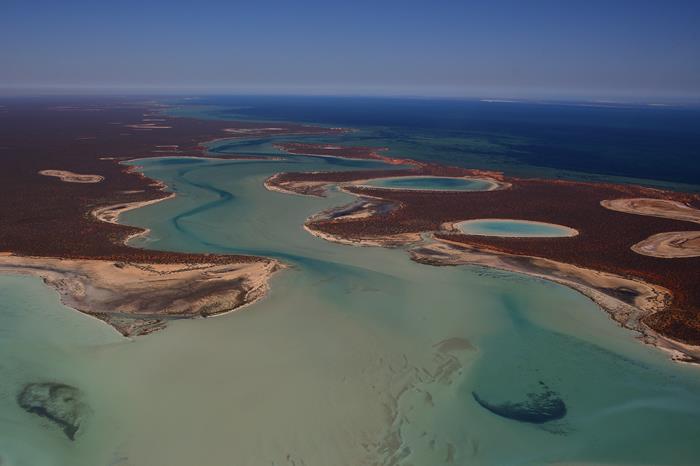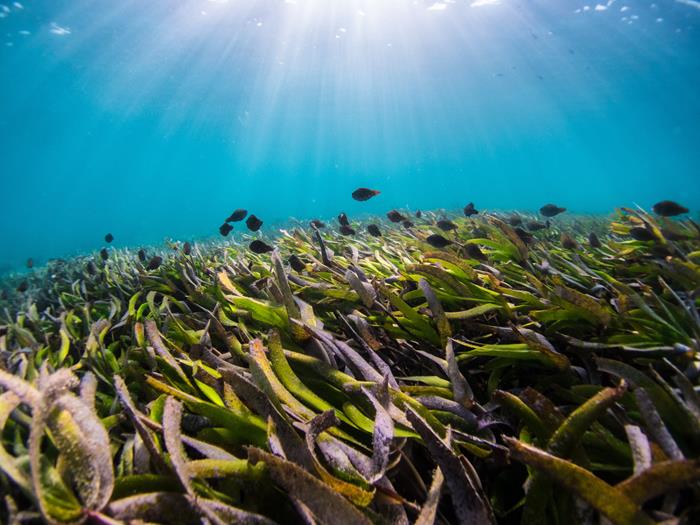The Australia's Shark Bay region, a UNESCO World Heritage property, is generally shielded from major cyclones. Yet, it is not entirely immune to their impacts. New findings show that the region was struck by a category 4 to 5 tropical cyclone in 1921. The event is the most intense tropical cyclone recorded in the Shark Bay region and in Western Australia south of 25°S.

A view of Shark Bay, in Australia (Source: Wikimedia Commons)
The 1921 tropical cyclone grounded ships and generated a storm surge that washed over coastal areas, flooding much of the historic township of Denham. The massive storm surge also sent fish and sharks ten kilometres inland. Although these observations clearly depict an intense event, the size of the tropical cyclone has remained relatively unknown until now because there was no clear way to integrate these observations with modern techniques.
Using a new method called the Quantified Historical Data Framework, the research team combined the historical data with modelling of the possible tracks taken by the cyclone to reconstruct the path and size of the event. The framework involved conducting a structured analysis of the historical archives to evaluate the authenticity, consistency, and relevance of the reports detailing an extreme storm surge associated with the 1921 cyclone.
 Associate Professor Switzer examining historic documents that were key to constrain the size of the 1921 tropical cyclone that struck Shark Bay (Source: Lauriane Chardot/Earth Observatory of Singapore)
Associate Professor Switzer examining historic documents that were key to constrain the size of the 1921 tropical cyclone that struck Shark Bay (Source: Lauriane Chardot/Earth Observatory of Singapore)
The results were published in
Communications Earth and Environment by an interdisciplinary team comprised of scientists, engineers and a historian, and led by Associate Professor Adam Switzer, a Principal Investigator at the Earth Observatory of Singapore. “Our research leverages the power of historical records to gain deep insights into the impacts of disasters in regions with limited exposure to cyclones,” said Assoc Prof Switzer.
Much of the information came from a hand-written notebook found in the State Archives of Western Australia. “We were very fortunate that the local pearling inspector Wally Edwards made incredibly detailed notes of this cyclone” said Dr Joseph Christensen, a historian from the University of Western Australia who co-authored the paper.
The scientists also found that the cyclone had lasting effects on the local dugongs and seagrasses, in a similar way that tropical cyclone Yasi in 2011 impacted the seagrasses and dugong populations of northern Queensland. “A reoccurrence would likely have considerable long-term knock-on effects to ecosystem functions and services, particularly as the seagrasses of Shark Bay contribute to several World Heritage values,” said Dr Jenny Shaw, Director of Research at the Western Australian Marine Science Institute and co-author of the study.
 Seagrasses provide a range of ecosystem services to many regions in the world, including Shark Bay (Source: Benjamin L. Jones/Unsplash)
Seagrasses provide a range of ecosystem services to many regions in the world, including Shark Bay (Source: Benjamin L. Jones/Unsplash)
Such strong tropical cyclones generally happen very rarely - about once every 80 to 100 years - but they are expected to happen more frequently due to climate change. However, current planning at Shark Bay Marine Park does not account for these events.
Such a large cyclone happening today would have major impacts. It would likely affect the seagrasses of the region, which contribute to several World Heritage values. It would also inundate the main street along the foreshore and flood critical infrastructure of Denham and nearby towns, causing devastating impacts to the regional economy. "By contextualizing the 1921 cyclone within a global framework, our research highlights the criticality of assessing probable maximum events for effective risk management in regions with marginal cyclone influence," said Assoc Prof Switzer.